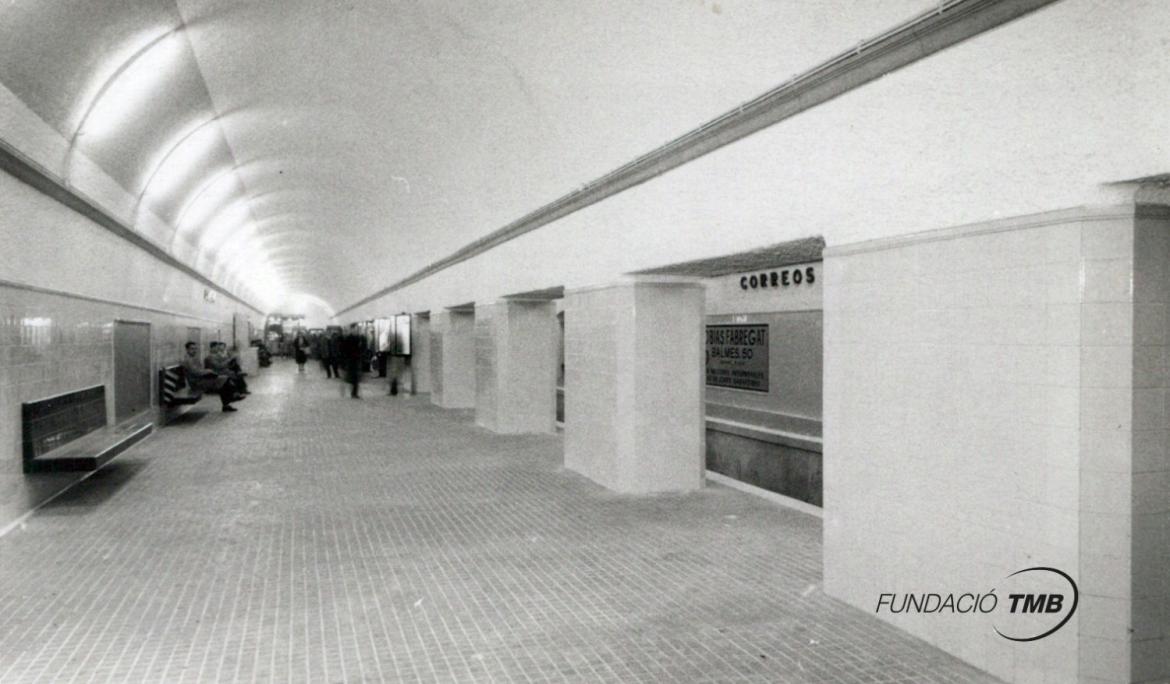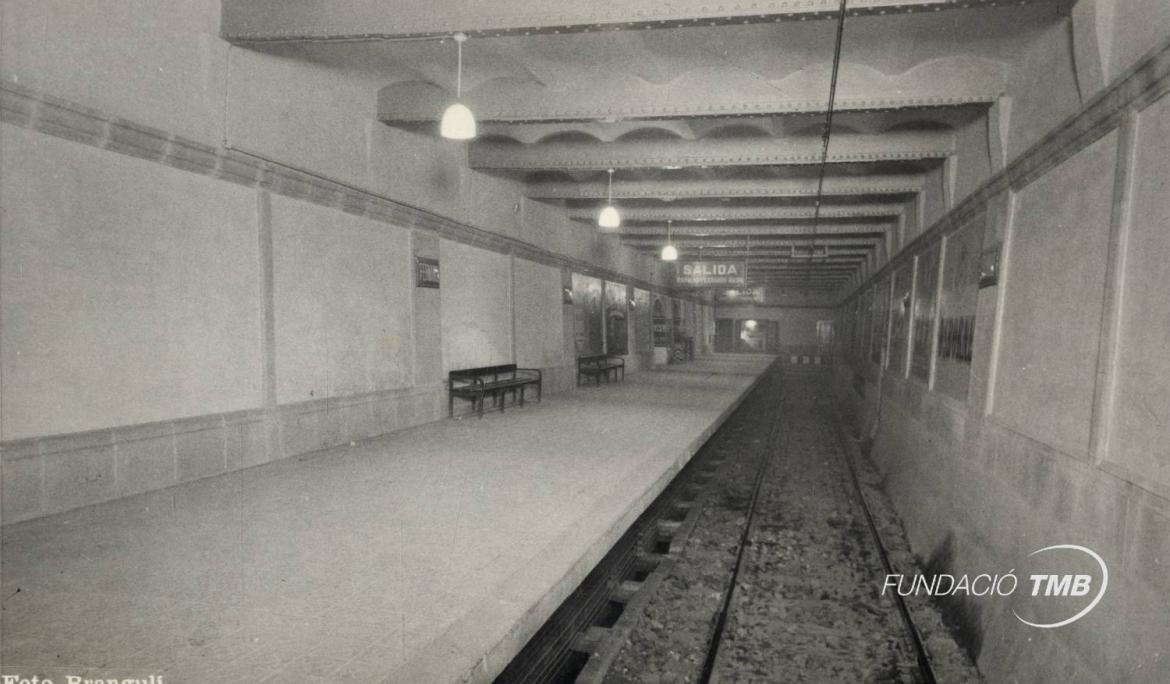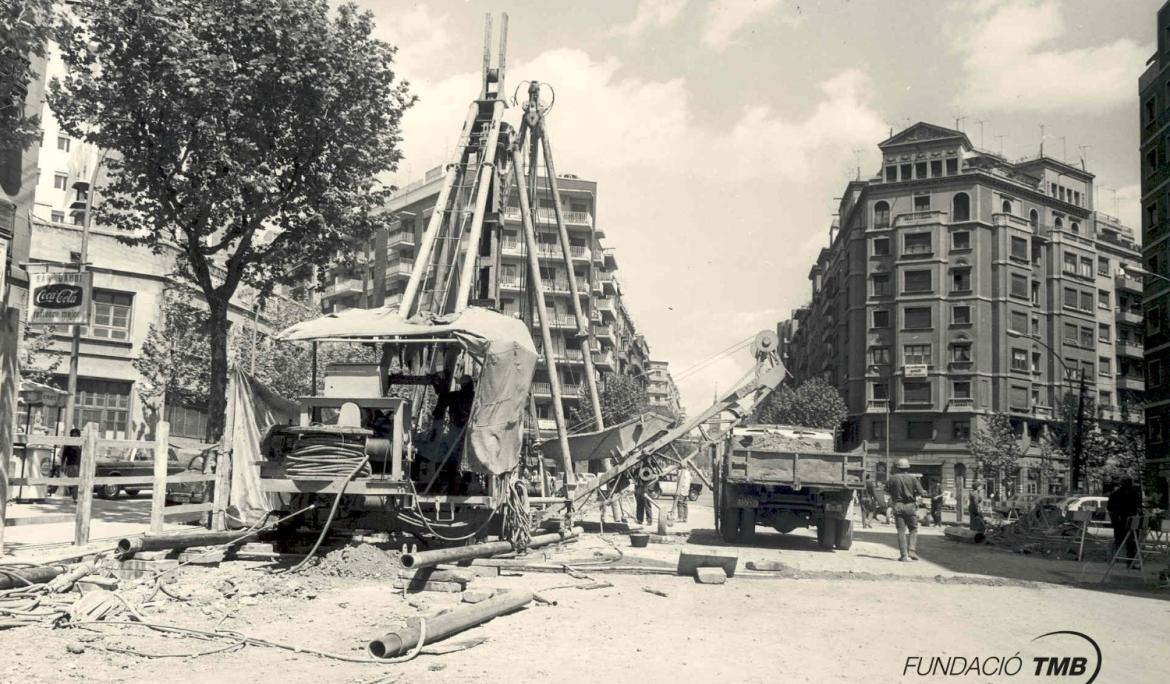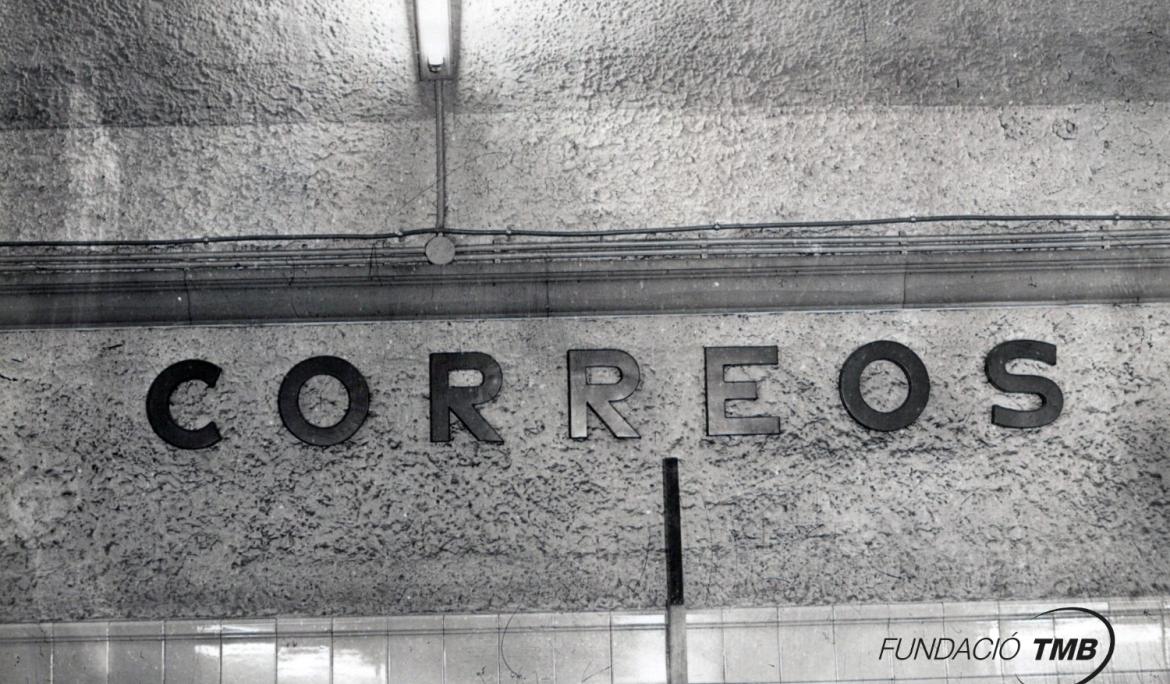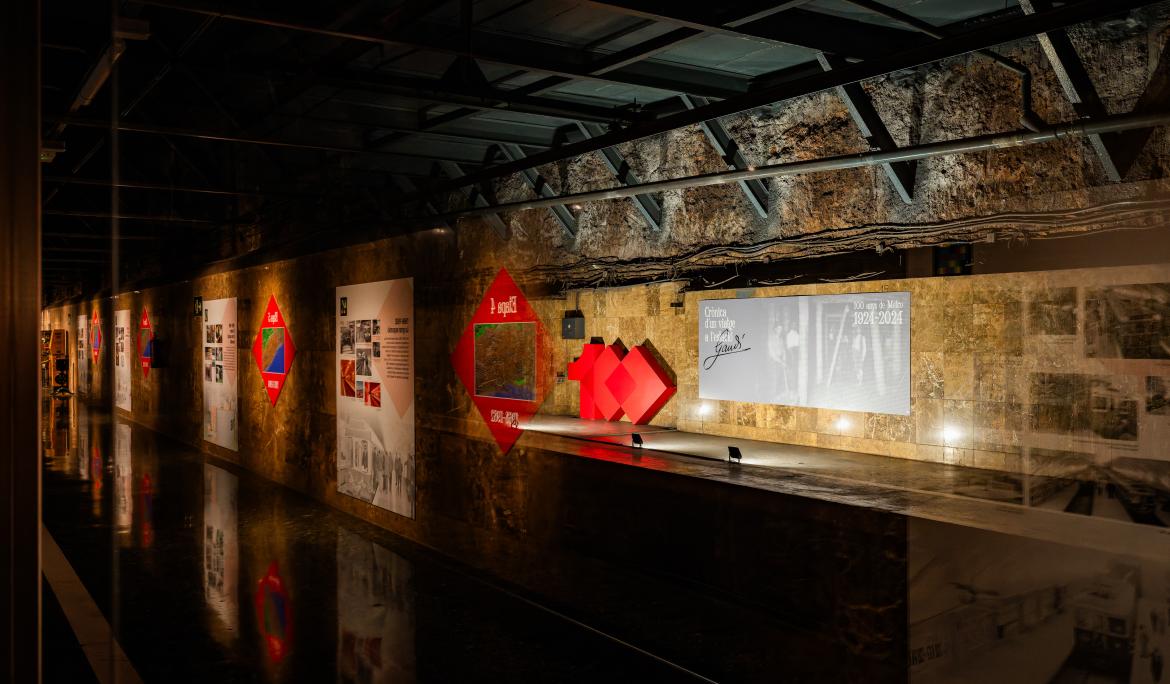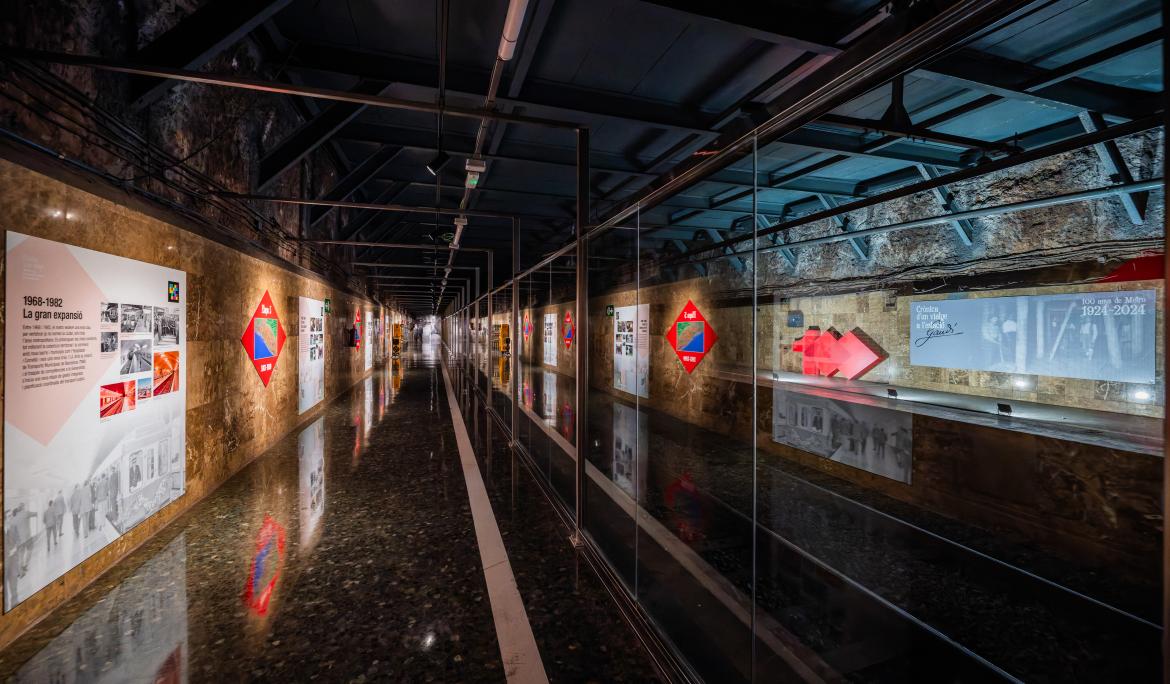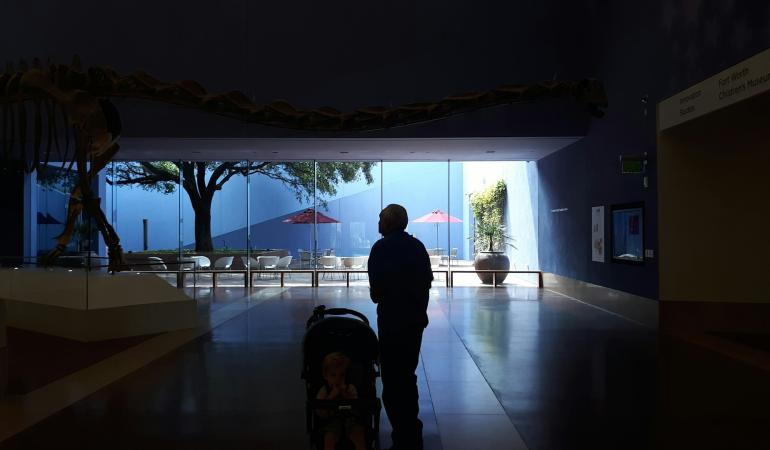Let’s take a journey through small windows into the past of Barcelona’s public transport system, which reveal how the city has grown and transformed over time. Want to discover them? Hola Barcelona takes you there!
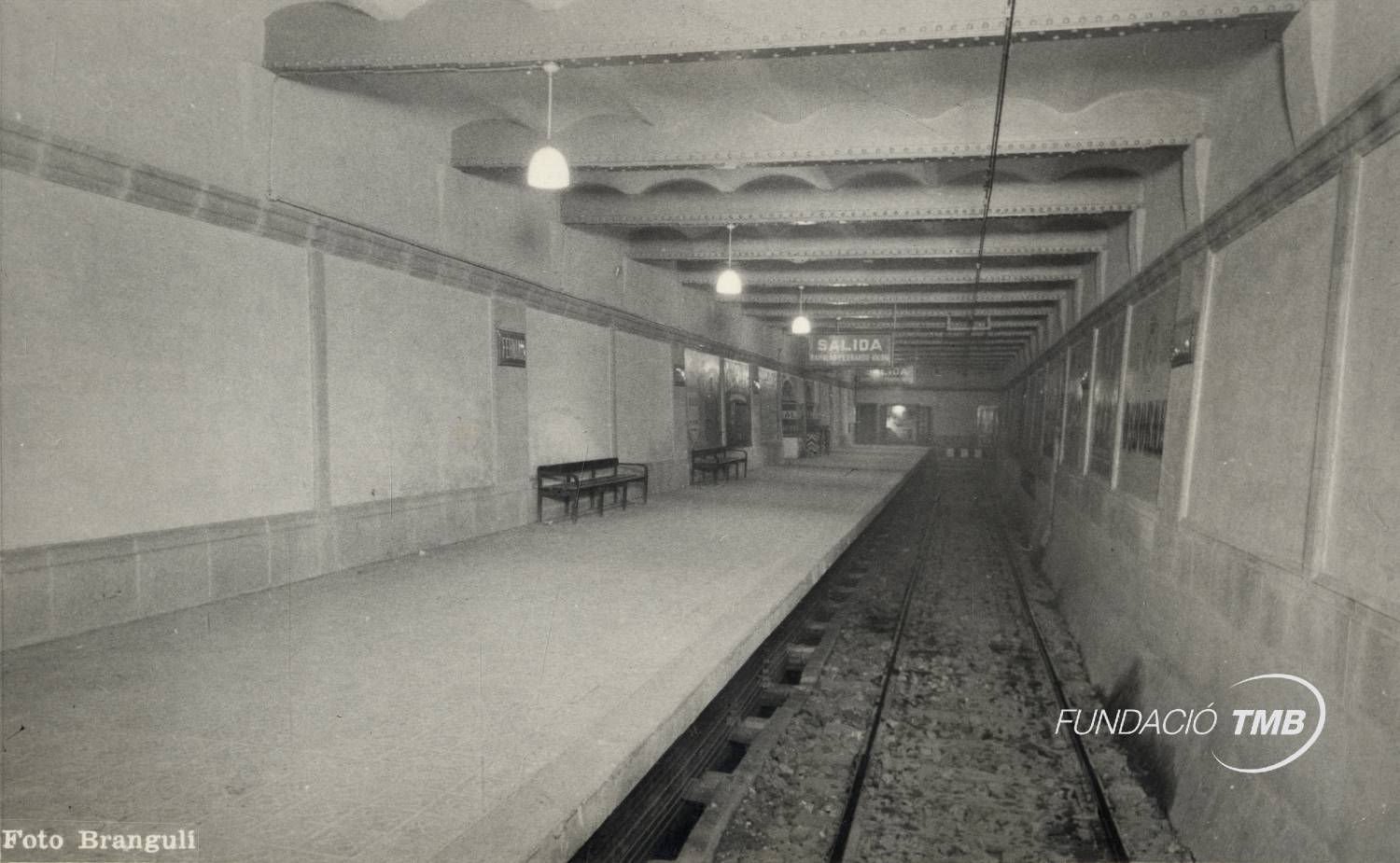
Beneath the streets of Barcelona, beyond the modern metro network that today connects the entire city and its metropolitan area, there is also a labyrinth of tunnels where time has stood still and silence reigns.
The ghost stations of the Barcelona metro are not urban legends, but real remnants of a city that was expanding quickly and occasionally left behind platforms and stations. The network we travel on today is the result of continuous evolution over more than a century.
The stations that disappeared or fell into disuse are small windows into the past, telling stories of forgotten projects, route changes, and decisions that shaped the metro as we know it.
In this article, and through the guided tours organized by TMB to celebrate its Centennial, we invite you to rediscover these underground spaces.
Correus, the Best-Known Station
Between Jaume I and Barceloneta stations lie the remains of Correus, perhaps the most legendary of the city’s ghost stations. Opened in 1934 on the Gran Metro branch along Via Laietana —today’s L4— it was a small single-track terminal with simple architecture and few decorations.
The original entrance, next to the Correos (Post Office) building, can now only be guessed at behind a discreet ventilation grille. Below, the stairways that once led down to the platforms still remain. When the line was extended toward Barceloneta in 1972, the main platform disappeared, and the station was closed forever.
Correus is a true time capsule: it still preserves some blue tiles, old advertisements, and even election posters.
Banc, the Station Surrounded by Legend
Also beneath Via Laietana is a station that never saw a single train but has fueled legends for decades: Banc Station. It was said that an underground tunnel connected the metro with the vault of the Bank of Spain —today the BBVA building— and that each night a train transported the day’s earnings there.
The story, however, is just that: a legend. In reality, the station’s origins are much older. It already appeared in the first metro projects for Via Laietana in 1911, under the name Beates, after the nearby street. It never entered service; only fragments of platforms and an unfinished exterior access were ever built.
Ferran, the Ghost Station Beneath La Rambla
Ferran is probably the least known of Barcelona’s ghost stations. Opened in 1946 next to Ferran Street, it was part of the Gran Metro —today’s L3— and was only in operation for twenty-two years. In 1968, when the line was extended to Drassanes, its only platform was demolished to make way for the new route.
Today, beneath the busy ground of La Rambla, some interior corridors lined with the characteristic white tiles still remain, as a reminder of one of the shortest-lived stations in the city’s metro history.
Gaudí, the Station That Never Opened
Gaudí holds the sad distinction of being the metro station that, despite being completed, never opened to the public. Located under the avenue of the same name, it was meant to be part of the original Line 2 (Horta–Paral·lel), the first section of which opened in 1959.
A change of plans in 1970 altered its fate: the section between Sagrada Família and Horta was ultimately incorporated into Line 5, which already had a station under Provença Street (today’s Sagrada Família). Thus, the station we now know as Gaudí, though finished, never entered service.
At times, its platforms have been used for advertising campaigns, and during the 100 Years of the Metro celebrations, guided tours and exhibitions are held there. 100 Anys Metro, s’hi fan visites guiades i incorpora un espai expositiu.
Looking to the Future
Beneath our feet, these silent stations continue to preserve fragments of Barcelona’s history, reminding us that the city and its metro are constantly evolving—adapting to the present without forgetting the past.
